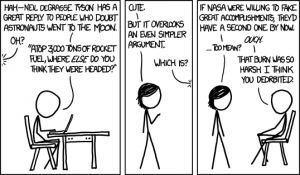Often during our discussions on Apollo, and continuing into our current reading, Where Good Ideas Come From, the question of whether or not NASA could effectively put together a mission to the moon comes up. Often the reasoning follows that since NASA has not done much since the Apollo program, the people who had the knowledge of how to do things like put a man on the moon have left and that there would be a very steep learning curve involved with future manned missions. I would argue that this is in fact not the case.

First, NASA has been launching an incredible volume of missions since the final Apollo launch. From Space Lab to Mars Science Lab Curiosity, there has been a continuous stream of launches. There are 20 Earth Observatory satellites which NASA launched to provide GPS positioning, track weather patterns, and build a complex model of Earth’s atmospheric conditions. These launches are not even confined to our own solar system, as Dr. Bassett mentioned, Voyager exists. The take away from this is that although there are not many manned missions going to other bodies in our solar system, there are still plenty of experts in rocketry working to place objects in orbit throughout the solar system with more precision than was ever achieved during Apollo.
Secondly, manned missions have not ceased. Despite the fact that we have not sent any astronauts to other celestial bodies, as of June 8th of 2018, 146 Americans had been launched to the International Space Station. While many of these launches were completed in Soyuz rockets, they were also handled by the space shuttle. In more recent years, many of these duties have been taken over by Space X. NASA also has many launch systems under development for sending crews into deep space. The current forerunner SLS or Space Launch System is equipped to launch four astronauts in an Orion capsule to Mars. While on a whole it is 41 feet shorter than the Saturn V, it has 1.3 million more pounds of thrust and one million more pounds of thrust than the space shuttle. This increase allows it to hold 70 tons of cargo as opposed to the Space Shuttle’s maximum of 22 tons.
Finally, while it may appear that NASA has no current plans for future manned missions, they, in fact, have a detailed roadmap of their future projects and goals. After receiving a directive from the president, NASA has accelerated the pace of this mission plan. They currently are on track to send a crew of Americans past the Moon in 2023. Following this, they plan to create a space station in lunar orbit to serve as a base of operations for missions to the surface as well as a jumping off point to Mars. This mission also has the goal of establishing a permanent presence on the Moon for private industry to operate. Following a new rover mission in 2020, NASA plans to send a rover on a round-trip mission to Mars, paving the way for humans to do the same. NASA is not idle, and the next few decades will bring exciting new exploration for all of humanity.
